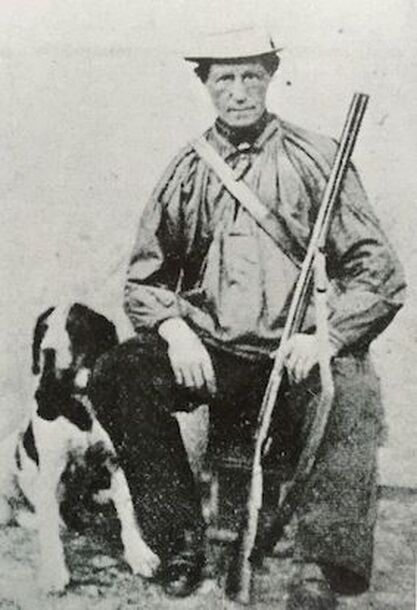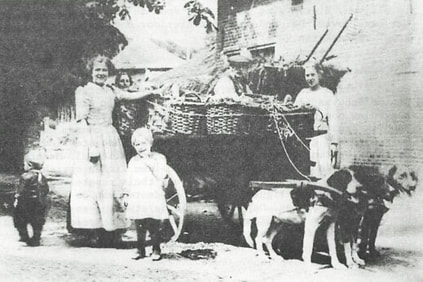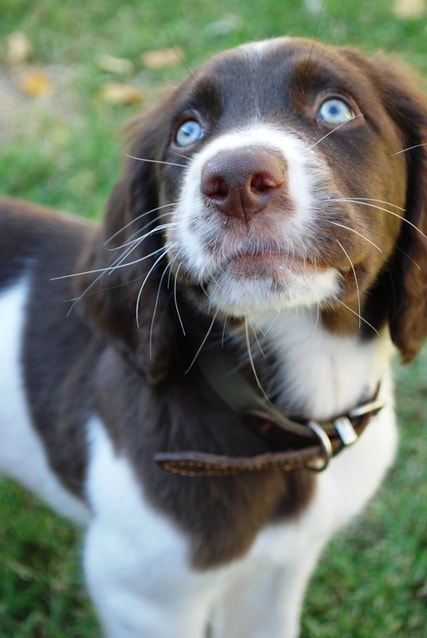What makes a Drent: The Three Pillars of the breed.
|
Getting a basic description of the Drent is fairly easy and straight forward these days, as most web pages now have copy and pasted all the same basic information. Still once in a while one has a few factoids I have no idea from where they got their information, but still; heights, weights, colors, coats can all be read about in the breed standard or even some history might be helpful. Still I don’t think you are left with what a Drent really is – besides a good looking Dutch farm dog.
The Drent is not your typical Continental pointer. For starters the Drent has a tail, and the breed is nearly four hundred years old. The Drent was built by common men for common men, or rather by farmers for farmers. The people of Drenthe were relatively poor, so one dog needed to be able to do the job of many: hunt feather and fur, keep the farm clear of vermin, and much more than any other pointer I know of – so is the Drent the first versatile Pointer? I’d need to pose that question to Craig Koshyk author of Pointing Dogs Volume One: The Continentals to get an honest answer. But shooting from the hip, I’d say yes; but more or less by accident, or rather as a matter of necessity, quite unlike the German breeds. This, I think is important to have in mind when considering this breed for your family, and as a hunting partner.
I don't know of a single web page which bothers to mention the three pillars of the breed, I'm sure most don't even know; so why would I bother here? Well in order to really understand what a Drent is I think we need to have a look. The first pillar being: a productive hunter in the field, with the drive and desire to work as a team with his boss (as the Dutch would say). We might be more inclined to say handler. This one may seem the most obvious, but I have had the opportunity to hunt over a good number of dogs of different breeds. Some hunt well, some hunt for themselves; few actually hunt for their boss the way which is common to the Drent. Once you have experienced the difference you will know it. The Drent's hunting ability is the stuff of legends throughout Europe. The second pillar the Dutch call a property dog, which we might be tempted to translate rather inaccurately as 'watch dog'. The province of Drenthe was poor and sparsely populated as well as being near to the German border. Dutch farm houses were built in a square, with an interior courtyard, called a Hof. |
|
It wasn't always easy to see who was at the front gate; so, the Drent was expected to announce visitors – which they will do with glee. This is to be done without fear or aggression. As an example, we have had four intact males around a female in heat, sure there was some posturing, but all anyone ever had to say was, “knock it off” to get the situation completely under control. With that, once a visitor is welcomed a Drent will typically be on his way or show your guest the most valuable thing in the house, the cookie jar. This is Drent temperament. Aggression in this breed is considered to be a serious fault.
As if to add emphasis on this point the third pillar is for the Drent to be a great family pet, providing companionship and affection to all family members - with children as their specialty. Drents are active and require regular interaction and activity. Far from being hyperactive or nervous, a Drent will not do well in an environment which doesn’t stimulate them both mentally and physically. Also of importance is the Drent's intelligence. Those with an under-challenged Drent will get to experience what “ondeugend” means, as they will find a way to entertain themselves. Couple this with the trademark soft temperament, slow as molasses emotional development and often times stubborn streak which runs in varying widths can make working with Drents a challenge (in particular if you are accustomed to working “harder” breeds e.g. Wirehairs, Retrievers, and the like) and use Old School methods of training. |
|
Having a rock-solid relationship is more than just helpful as is having a sense of humor. Drents will learn the bad as fast as they learn the good, so before you allow your patience to run thin and write the dog off, you would be well advised to re-look your training technique and methodology.
That all being said, if you can make it fun, there isn’t anything you can’t teach a Drent to do and you might be surprised with the results. You will know you have it right when your Drent more or less begins to read your mind, because they really do work to please. If you have any questions, please feel free to ask. |









